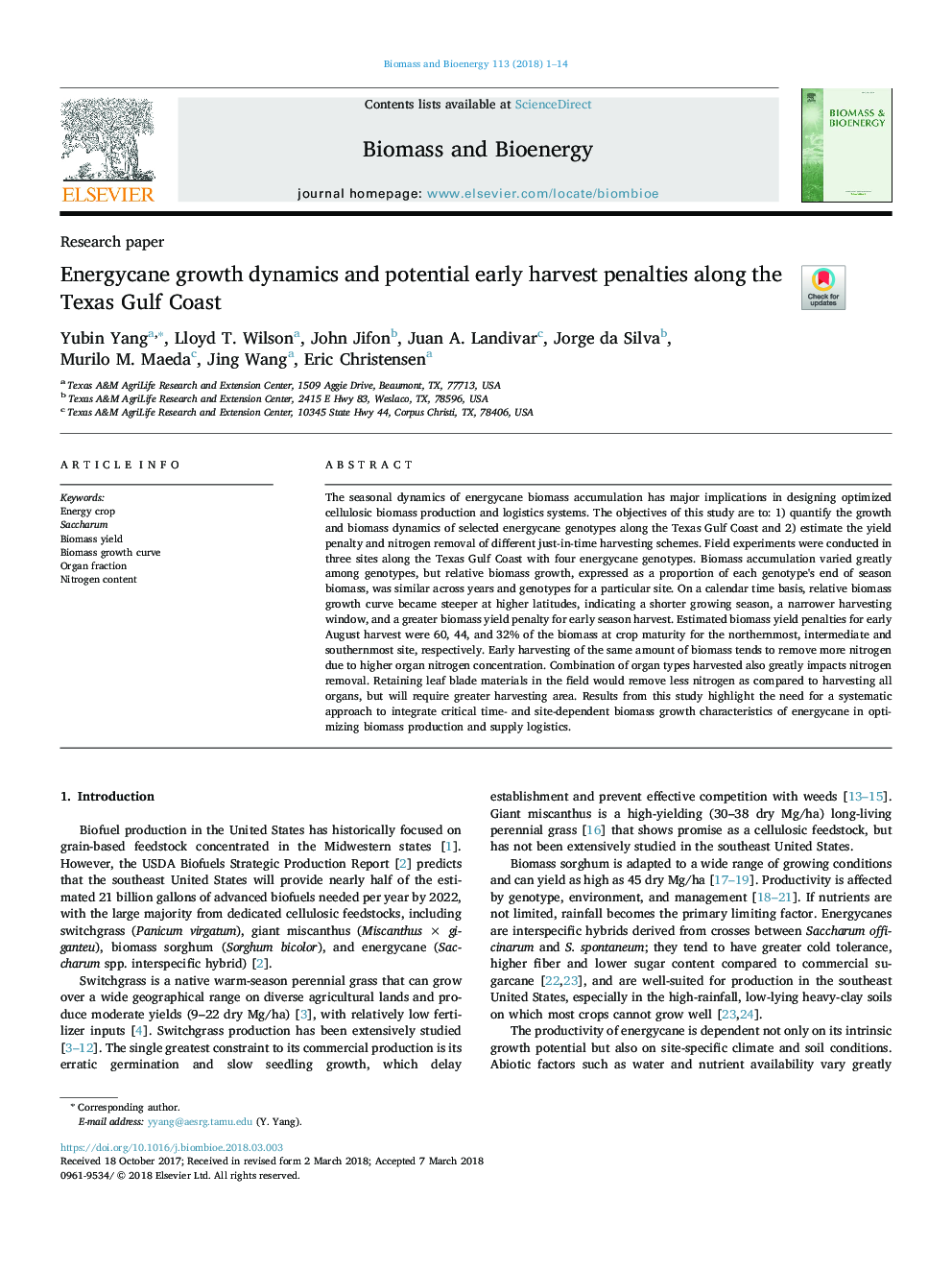| Article ID | Journal | Published Year | Pages | File Type |
|---|---|---|---|---|
| 7062887 | Biomass and Bioenergy | 2018 | 14 Pages |
Abstract
The seasonal dynamics of energycane biomass accumulation has major implications in designing optimized cellulosic biomass production and logistics systems. The objectives of this study are to: 1) quantify the growth and biomass dynamics of selected energycane genotypes along the Texas Gulf Coast and 2) estimate the yield penalty and nitrogen removal of different just-in-time harvesting schemes. Field experiments were conducted in three sites along the Texas Gulf Coast with four energycane genotypes. Biomass accumulation varied greatly among genotypes, but relative biomass growth, expressed as a proportion of each genotype's end of season biomass, was similar across years and genotypes for a particular site. On a calendar time basis, relative biomass growth curve became steeper at higher latitudes, indicating a shorter growing season, a narrower harvesting window, and a greater biomass yield penalty for early season harvest. Estimated biomass yield penalties for early August harvest were 60, 44, and 32% of the biomass at crop maturity for the northernmost, intermediate and southernmost site, respectively. Early harvesting of the same amount of biomass tends to remove more nitrogen due to higher organ nitrogen concentration. Combination of organ types harvested also greatly impacts nitrogen removal. Retaining leaf blade materials in the field would remove less nitrogen as compared to harvesting all organs, but will require greater harvesting area. Results from this study highlight the need for a systematic approach to integrate critical time- and site-dependent biomass growth characteristics of energycane in optimizing biomass production and supply logistics.
Related Topics
Physical Sciences and Engineering
Chemical Engineering
Process Chemistry and Technology
Authors
Yubin Yang, Lloyd T. Wilson, John Jifon, Juan A. Landivar, Jorge da Silva, Murilo M. Maeda, Jing Wang, Eric Christensen,
